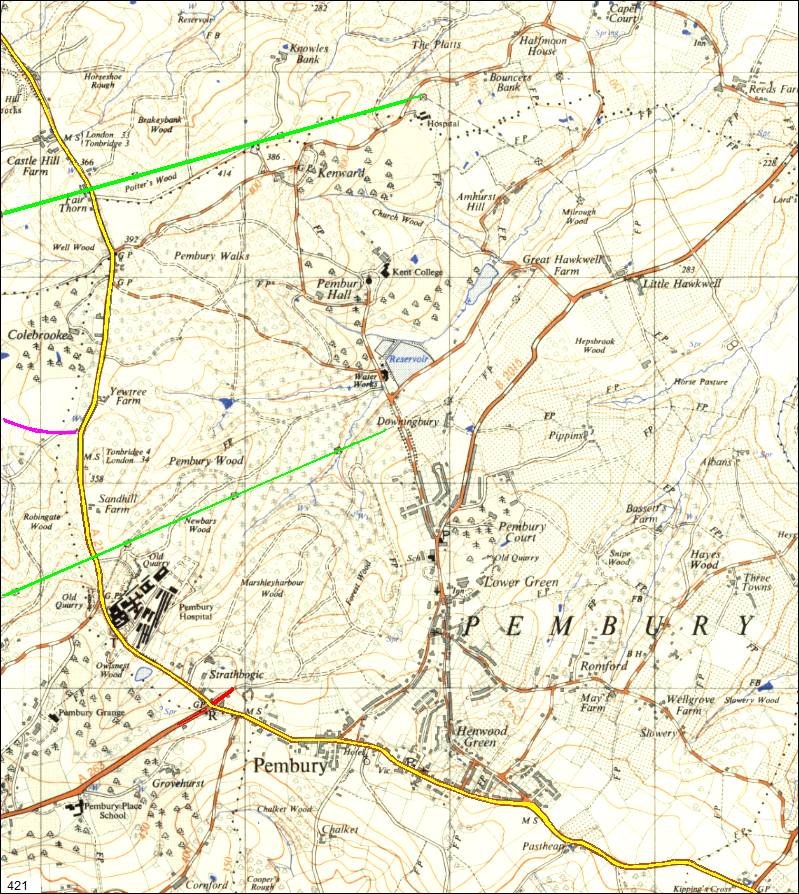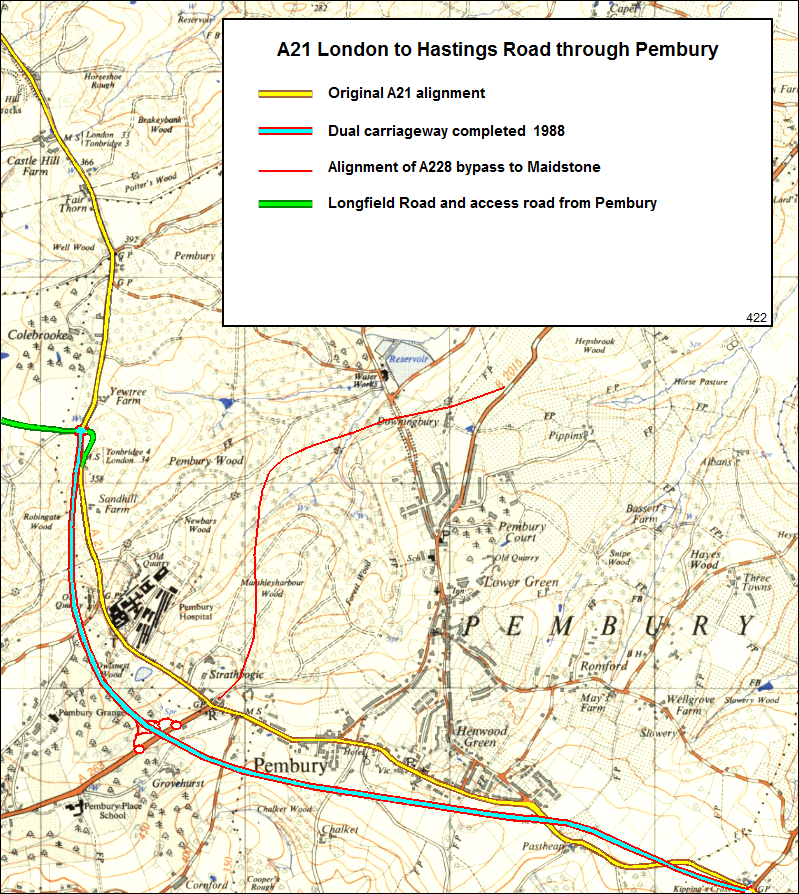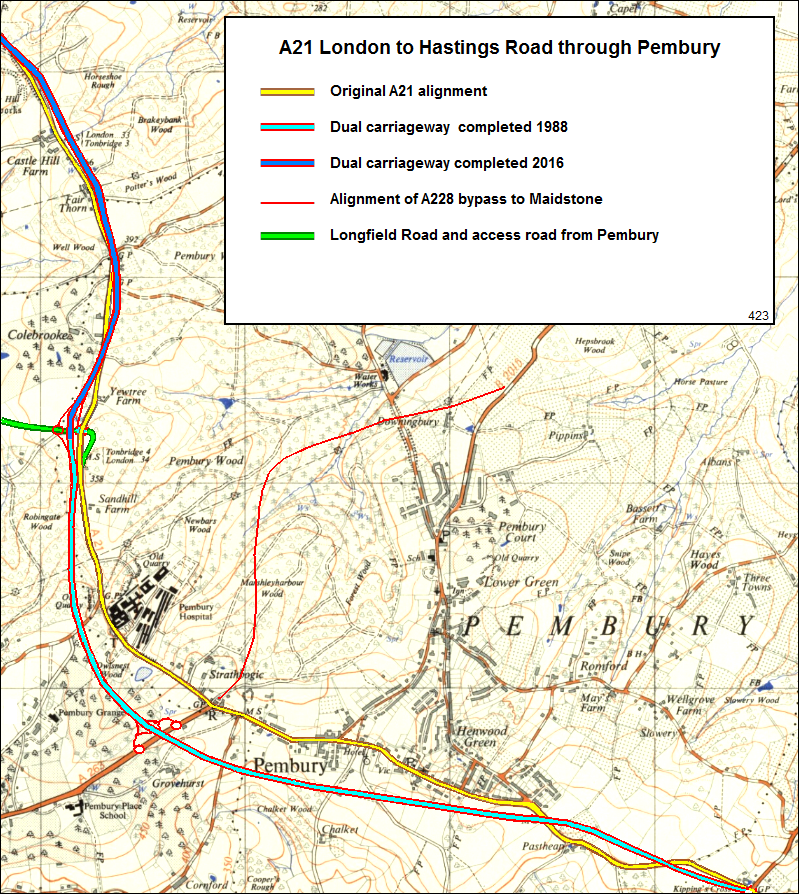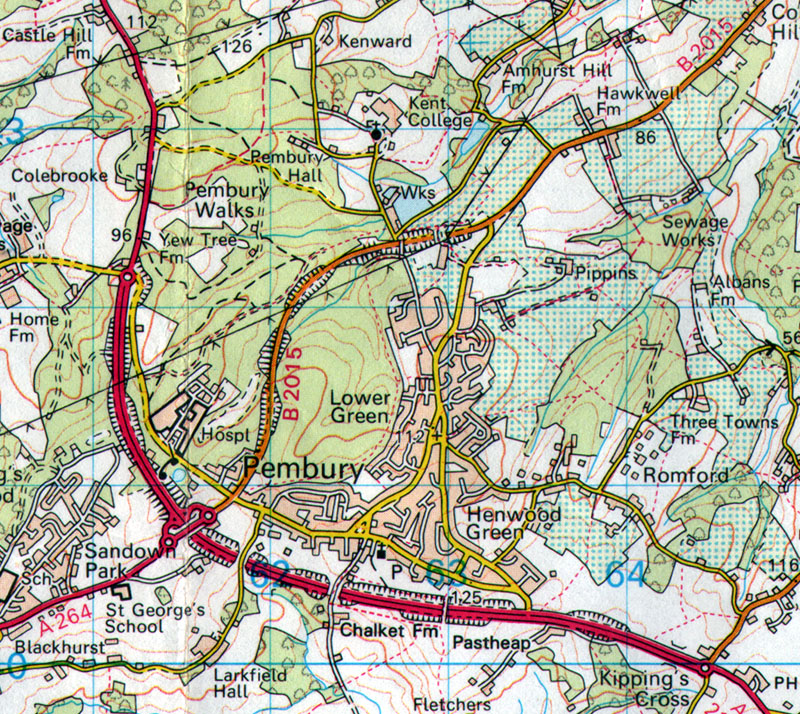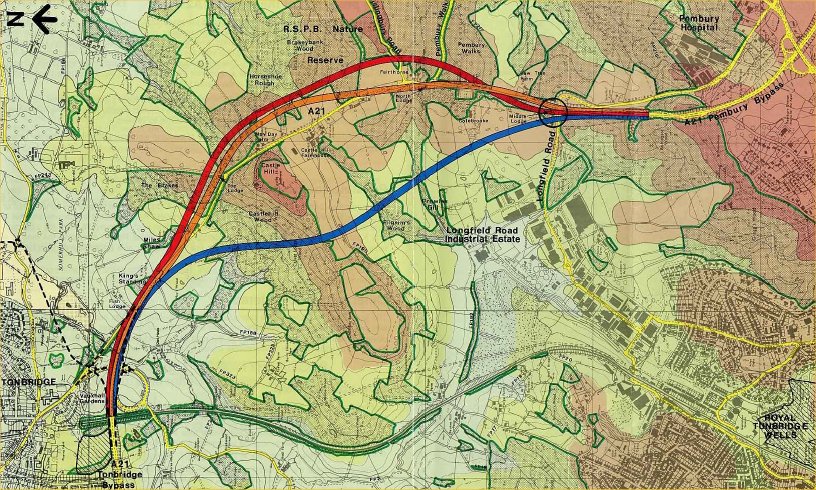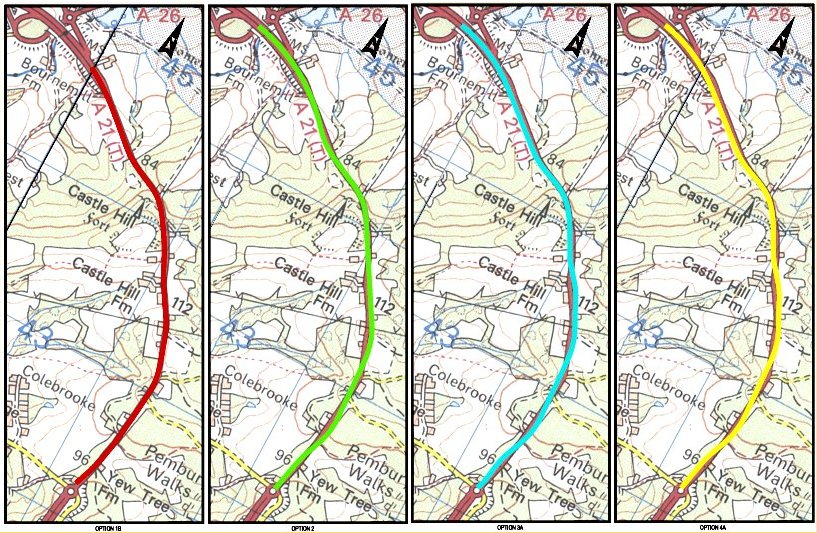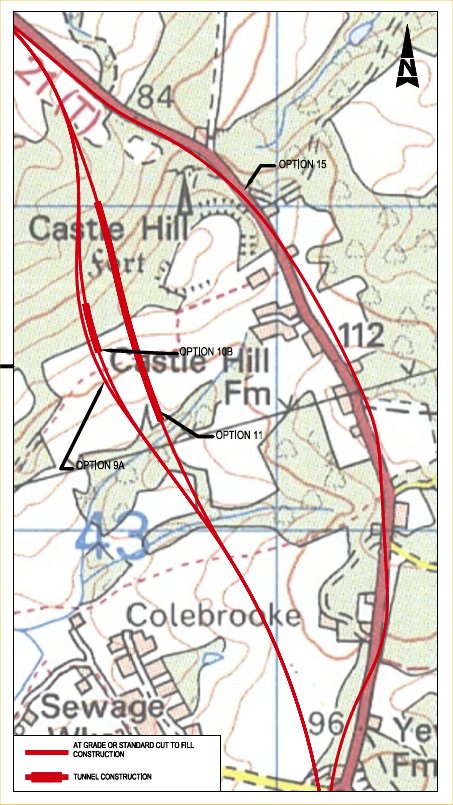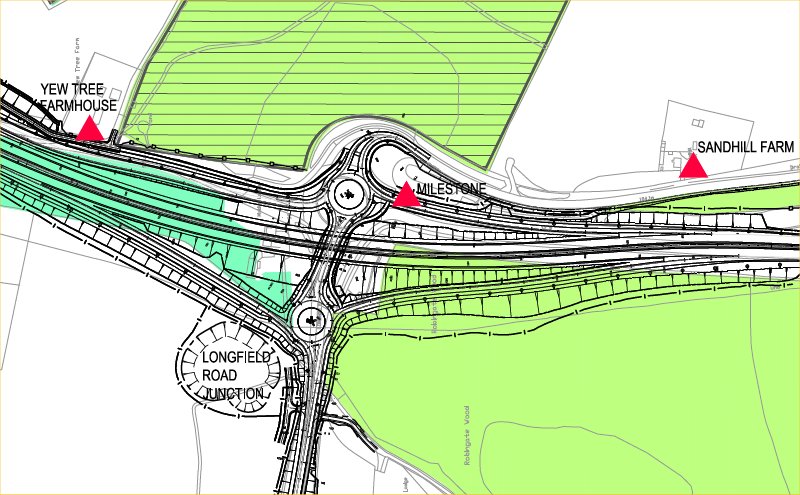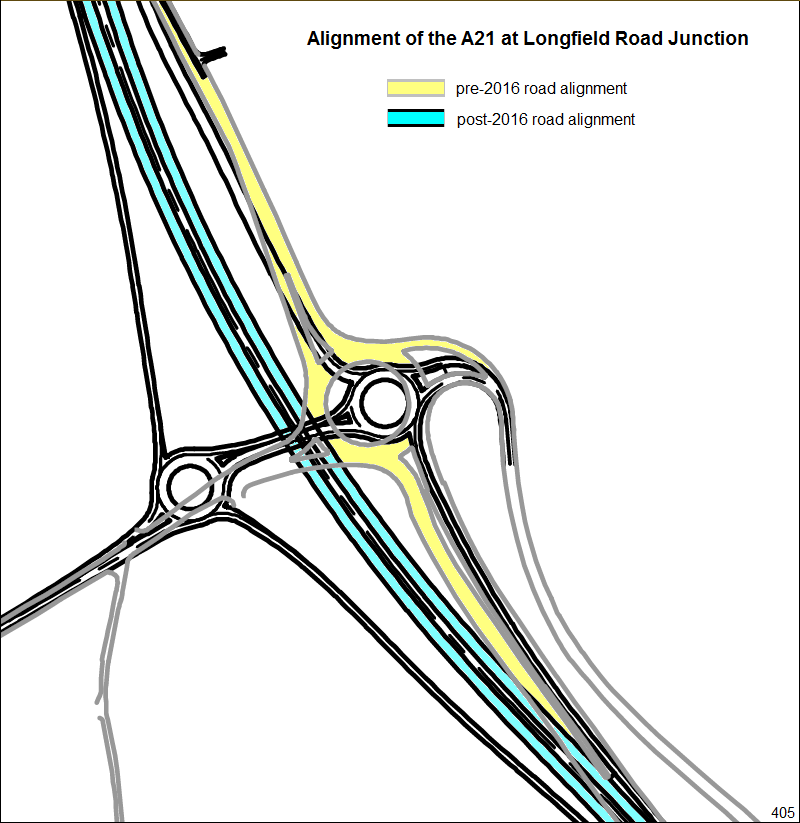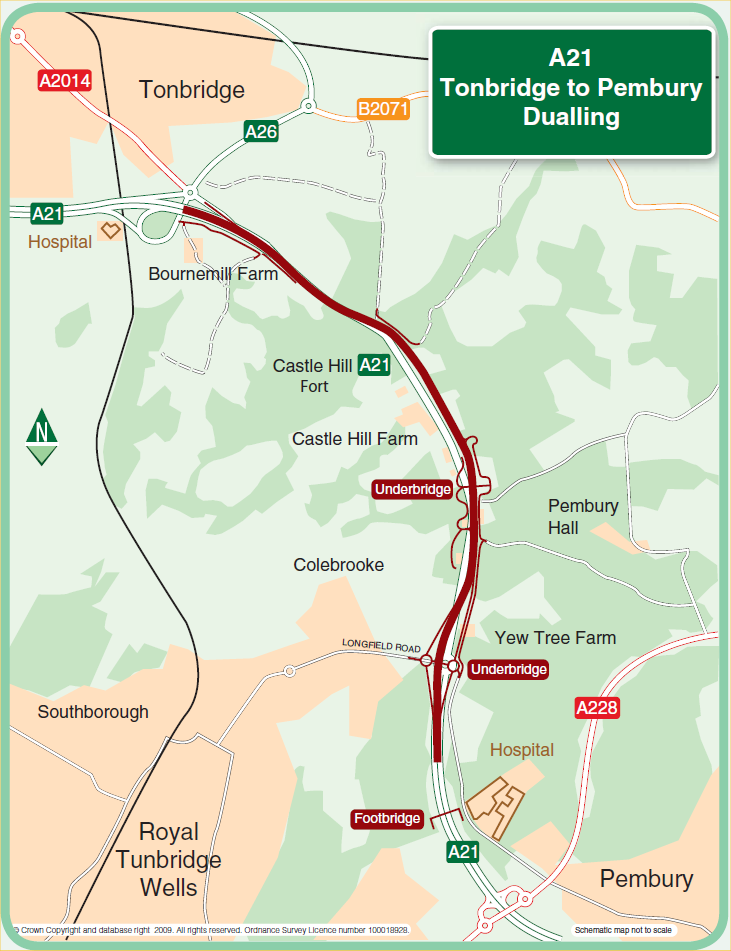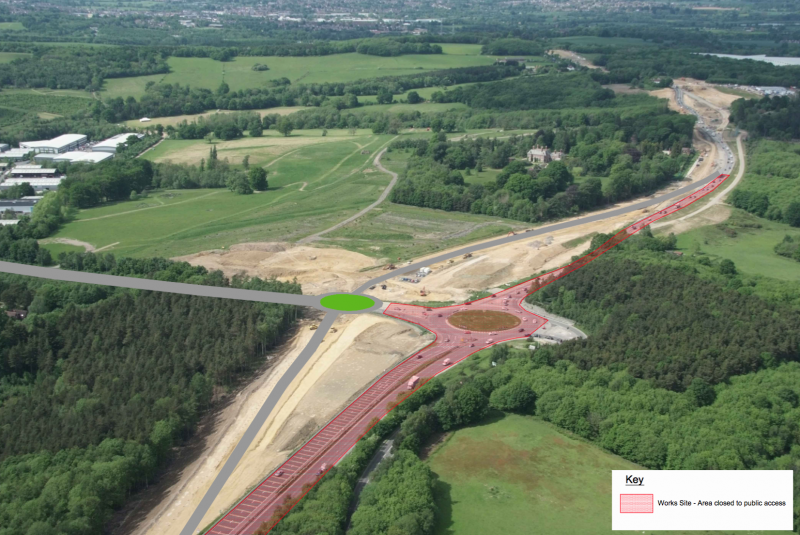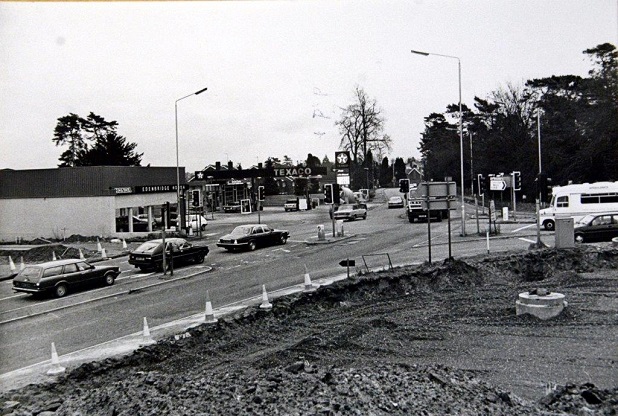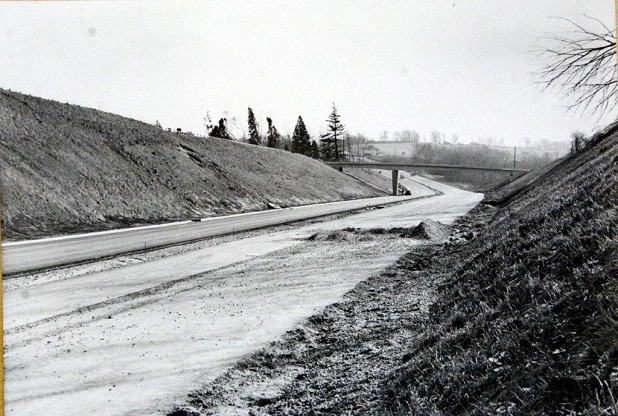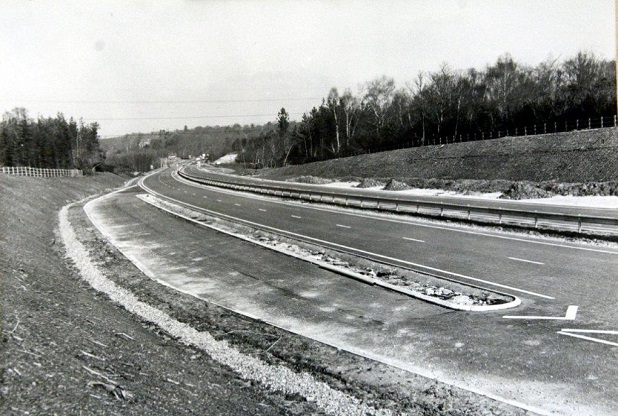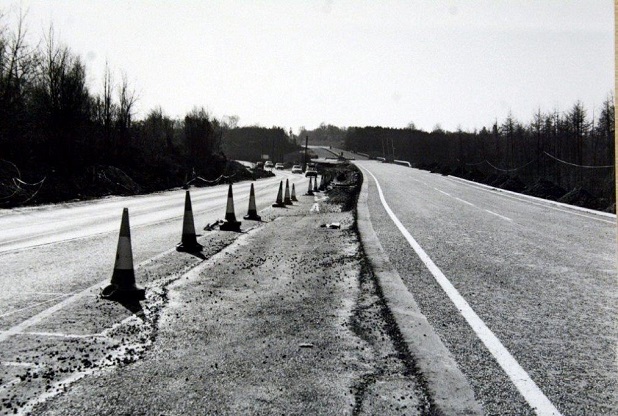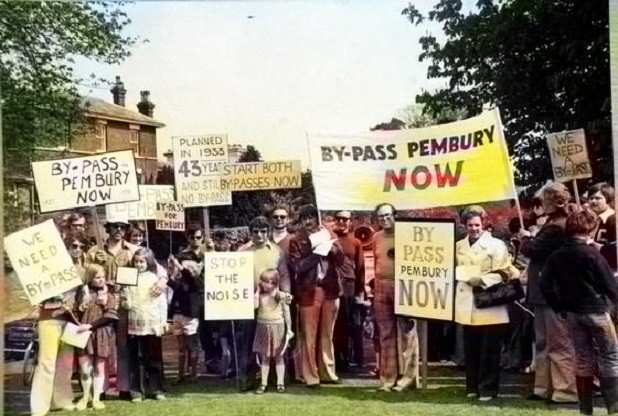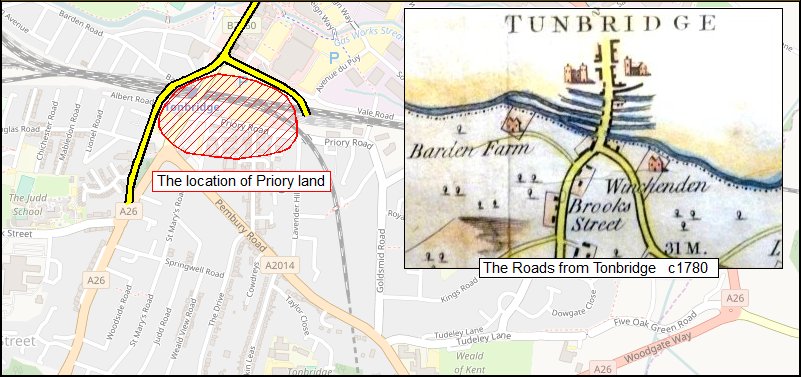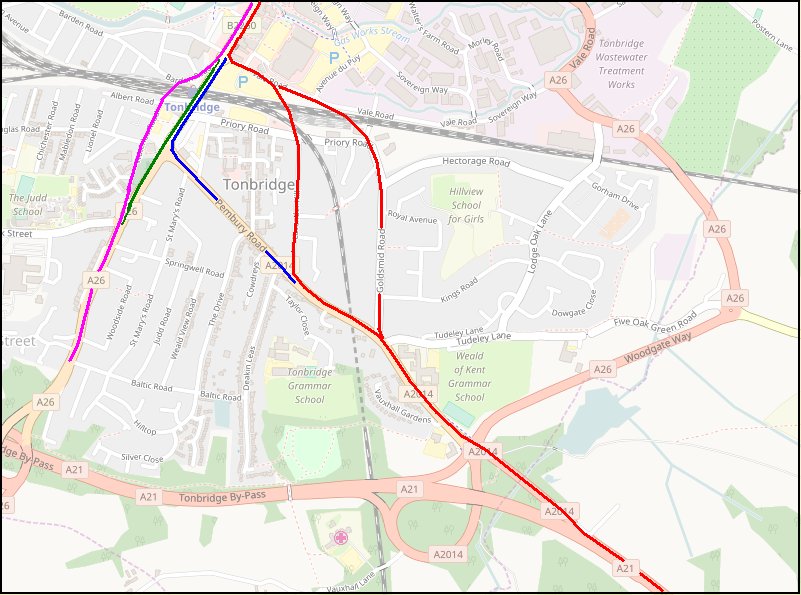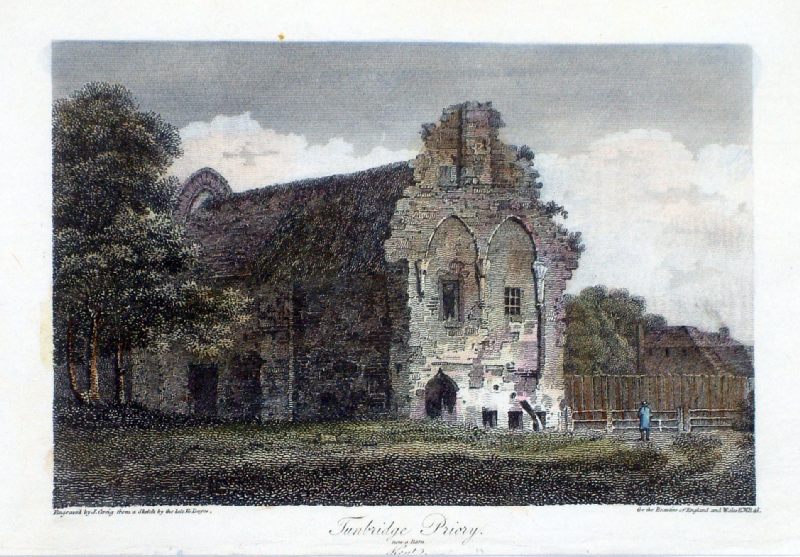Localities
- A21 General History
This page covers the main London to Hastings road known these days as the A21. Note that ‘Hastings Road’ on other parts of this
web site refers to the small section between the
village green and Bo Peep corner. The range of interest for the top part of this page
will be roughly Kippings Cross to Fairthorn /
Pembury Walks / Castle Hill Farm. The old road from London to Hastings and Rye dates back to Saxon times and beyond, mostly following high ground where possible. This was to avoid low, wet, boggy areas during winter and to have good visibility of the landscape and good sight of landmarks. Tonbridge had long been the sensible place to cross the flat & boggy Medway valley with Castle Hill leading the way south to the coast. It is thought that Harold led his army this way toward Hastings to confront William in 1066, and later the Conqueror used the road to regularly access Normandy via Hastings and Rye. It was later used to transport fish from Hastings to Tonbridge & Sevenoaks, drive sheep from Romney Marsh to Tonbridge, cattle from Sussex to Tonbridge & Maidstone, and mail coaches to distant towns. It was a well used route. The stretch through Pembury is along a thin ridge. Just traveling from Woodsgate Corner in the High Street to Bo-Peep Corner in Hastings Road it is easy to see the terrain dropping away in all directions. It is very common for towns and villages to be placed on hills and ridges – ‘high streets’ got their names for a very good reason. For more information on the historic A21 / London to Hastings Road please see – a) the Milestone
Location page for greater detail of milestones and
distance measurement.
The map below is from John Ogilby’s road atlas of 1676 and is the first printed map of the London to Rye road. 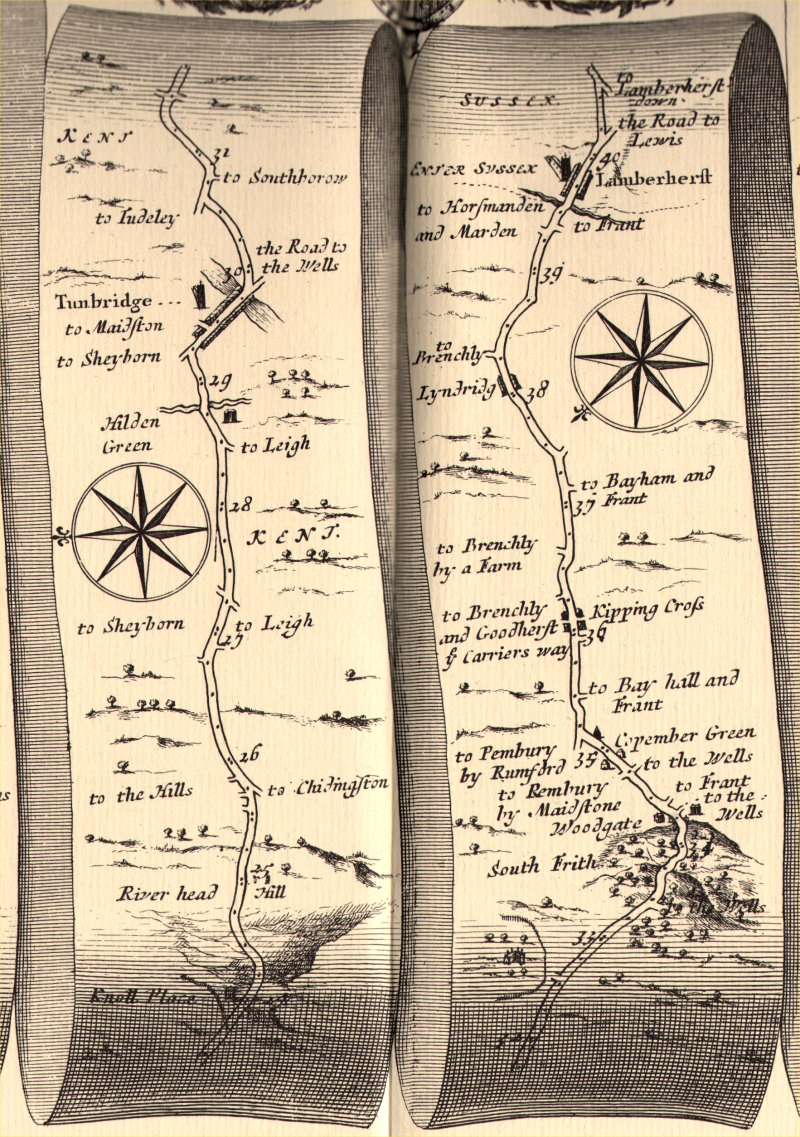
Above: a portion of the
1676 London to Rye map covering Riverhead to
Lamberhurst.
The first 3 maps below show the A21 alignment through Pembury, and its changes, over the years.
To help recognition
with the 21st century some long term landmarks are
highlighted –
The A21 dualling project had the task of building a new footbridge across the A21 between the hospital and the footpath that was Blackhurst Lane. At a meeting in 2014 at the Mercure Hotel a reason for the bridge was given – It was to replace an old bridge from years ago. The completion of the A21 bypass (1988) caused the truncation of Blackhurst Lane with the old A21, so a footbridge was constructed to enable pedestrians access from Blackhurst Lane to the hospital. Around this time it is rumoured that a road traffic accident involved a vehicle crashing into the base of the bridge, resulting in its closure and eventual demolition. Details of this incident are missing. The Sevenoaks Chronicle quoted this in 2015 – “At the Blackhurst Lane footbridge, there is a pedestrian crossing at the moment where there is a gap in the barrier but in the past there have been fatalities and as part of the scheme there will be putting in a footbridge. ” Sure enough, Google images show a gap in the central reservation armco barrier allowing pedestrian access across the A21 dual carriageway.
1988 A21 Pembury Bypass The 6 images below were scanned from a 1988 pamphlet belonging to John Hawker.
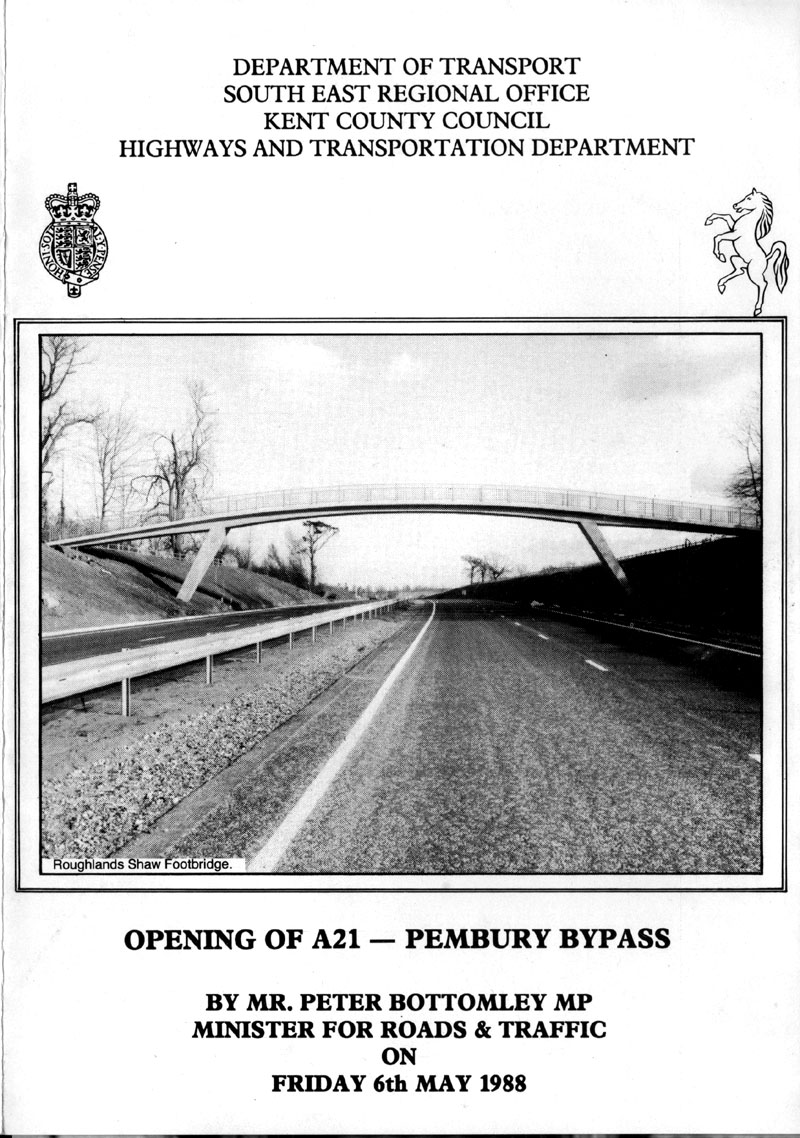 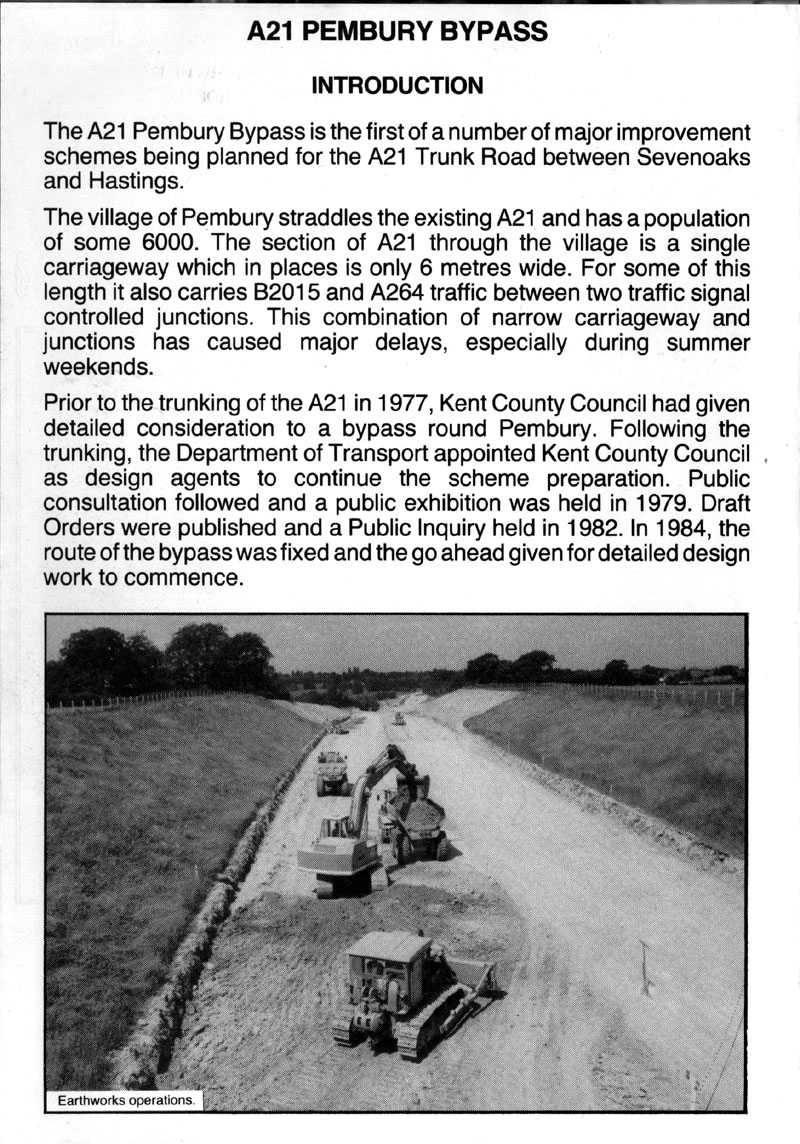 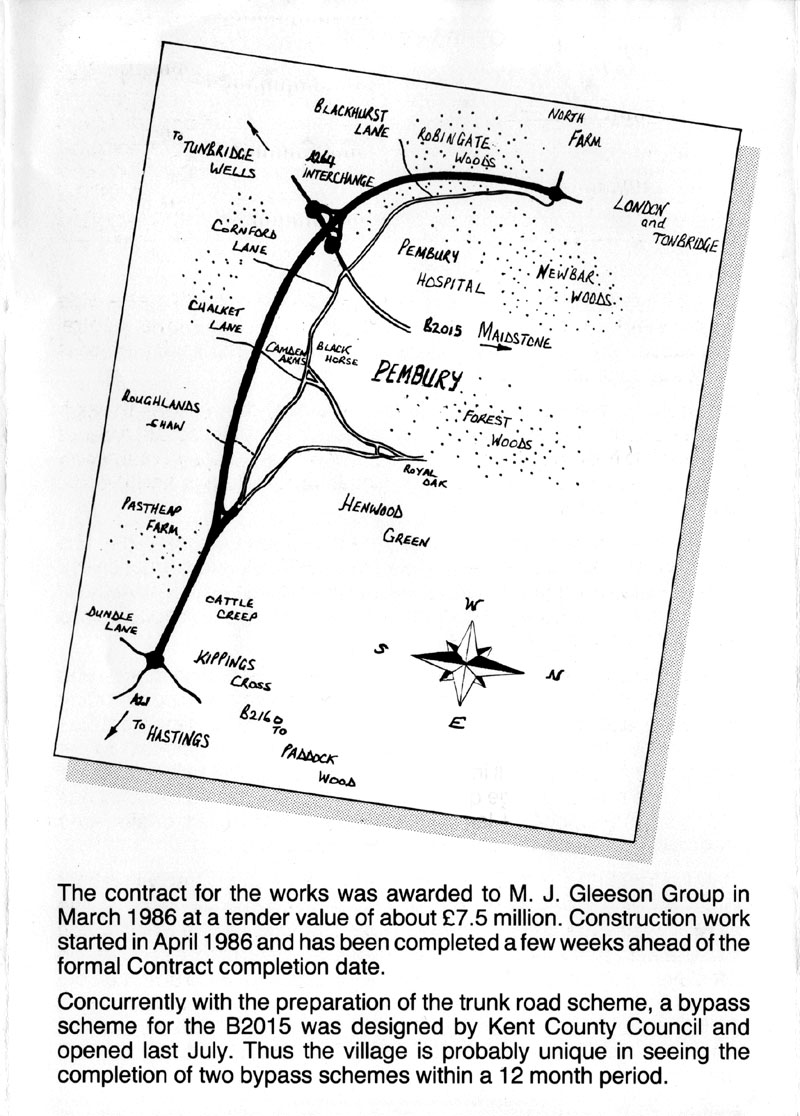 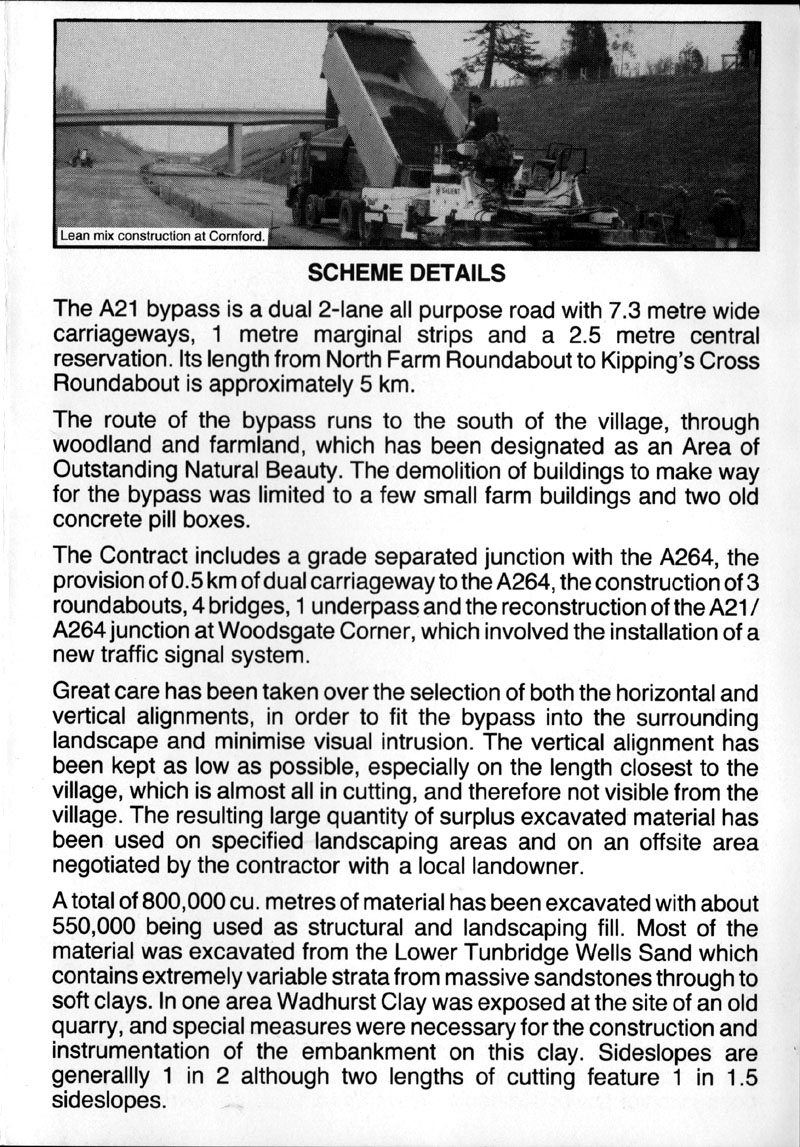 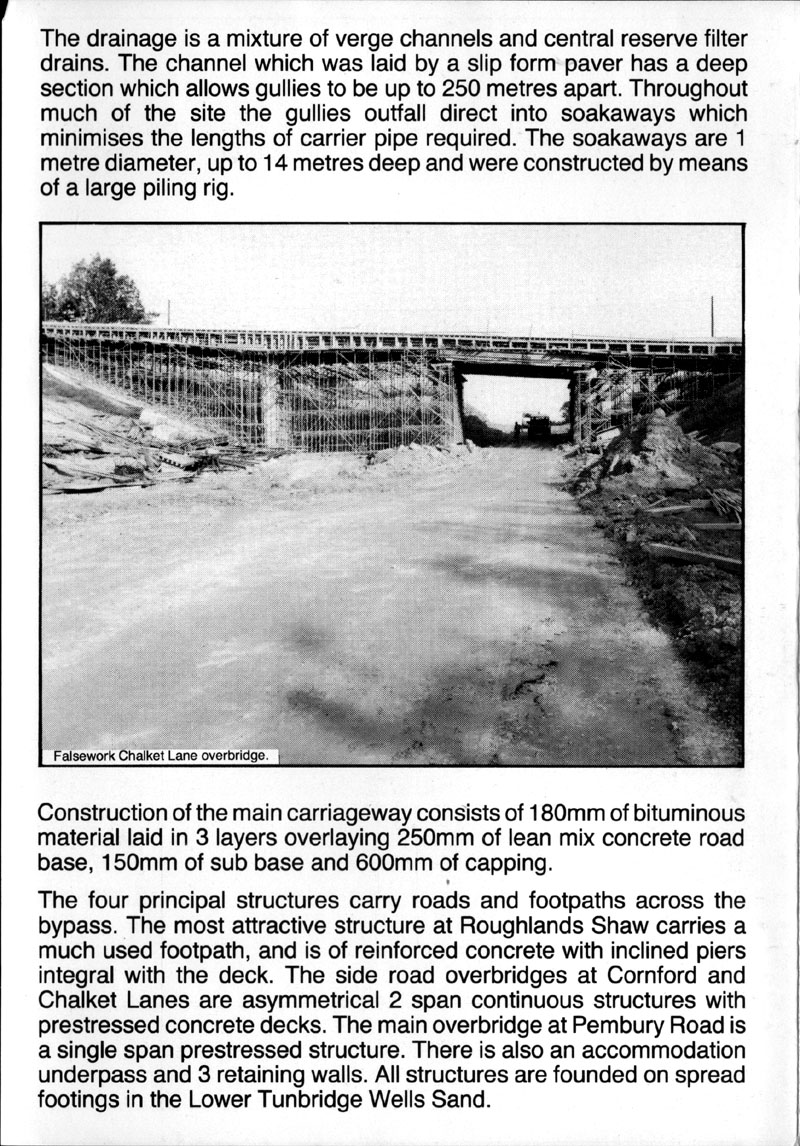
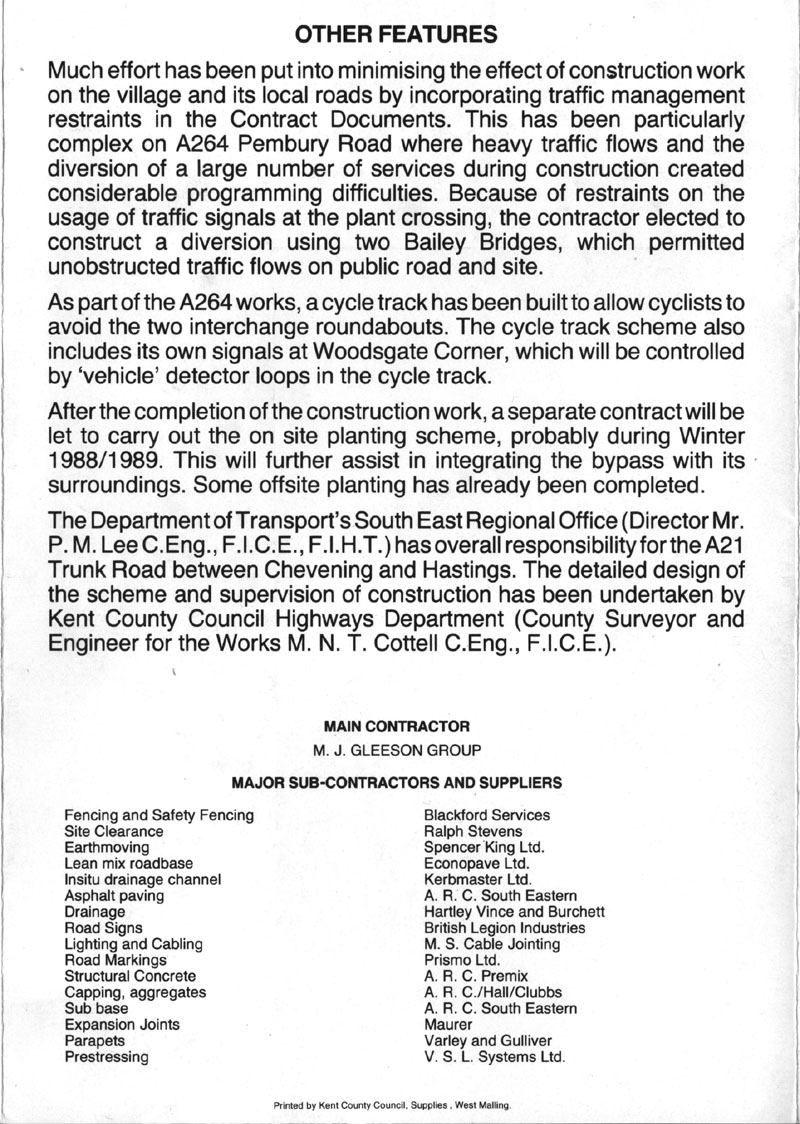
A21 Bypass 1987 – 1988 The following 5 photographs appeared on the Kent Live web site in March 2017. They have been reproduced here with kind permission of the Kent and Sussex Courier
The Old London to Hastings Road through Tonbridge This is outside the scope of Pembury history and is located at the bottom of the page out of the way. With much of the 2016-2017 publicity of the road widening calling it the Pembury-Tonbridge Road there was a glimmer of interest in following the history of the A21 into Tonbridge. In really ancient times the road, heading south, came past Tonbridge Castle and along the High Street toward Tonbridge Priory. The St. Mary Magdalene Priory was built in 1124, destroyed by fire in 1337, rebuilt again, and closed in 1523. It stood, decaying until the 1840s. The priory location is roughly in the area of Tonbridge railway station, its tracks and car parks. From Tonbridge Castle the roads passed either side of the priory grounds – left to get to Pembury & Hastings and to the right to get to Southborough, Crowborough & Tunbridge Wells. In 1840 or 1841 the South Eastern Railway acquired the priory grounds, demolished the old buildings and built the station, tracks, sidings and workshops. A new bridge was built across the railway in line with the existing High Street. The routes to Pembury and Southborough were now taken across the old priory land, rather than around it. The following maps help to illustrate the routes of the old roads before and after the railways in the 1840s. The railway was opened in 1842.
At the time of writing
there is some uncertainty as to the precise red
route (pre-1842) from Vale Road to the Vauxhall Inn.
Historic Development of the A21 (Way out of scope of
the Pembury History, but of some general interest) Farnborough & Knockholt Bypass 1927 Badger’s Mount
connection with M25 1986 Sevenoaks to Tunbridge Wells Turnpike (toll) road 1710 Sevenoaks Bypass 1966 Tonbridge & Hildenborough Bypass & Medway Valley Viaduct 1971 (Tonbridge to Pembury dualling) 2018 Pembury (North-South) Bypass. 1988 Kippings Cross Bypass (in planning) Lamberhurst Bypass 2005 Robertsbridge Bypass 1989 Battle Bypass 1950s Unfinished – a work in progress
Refernce links – https://www.sabre-roads.org.uk/wiki/index.php?title=A21
https://en.wikipedia.org/wiki/A21_road_(England) Compiled by Tony Nicholls 2015, 2016, 2017
IMPORTANT !!! This needs your help. All contributions will be credited. If you have any further information or corrections please contact me – Tony Nicholls email: pemburyhistory@gmail.com |


